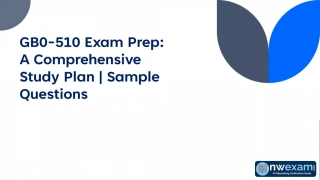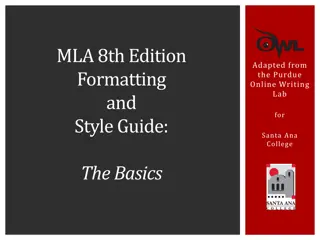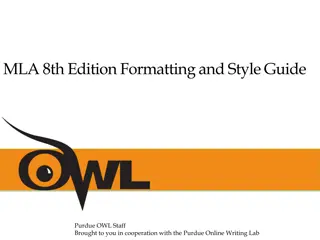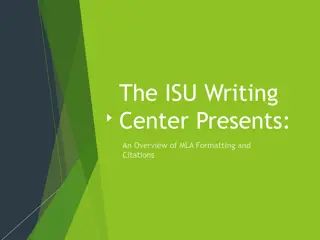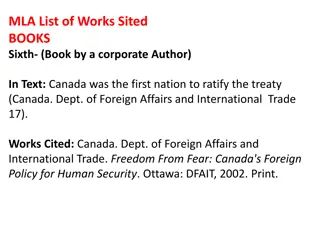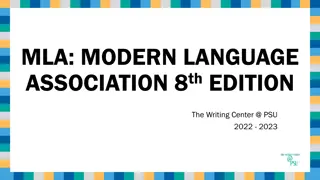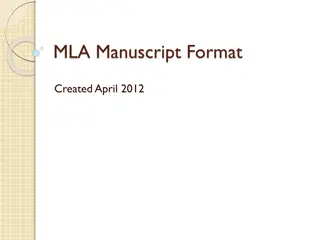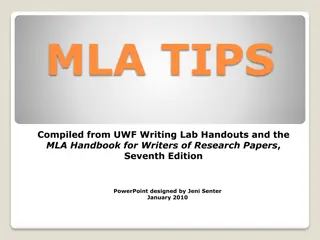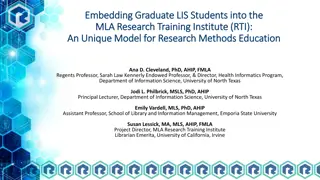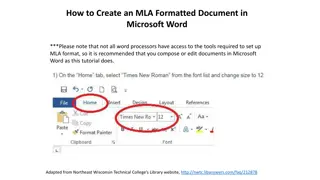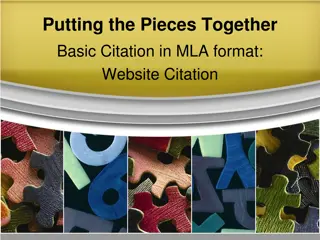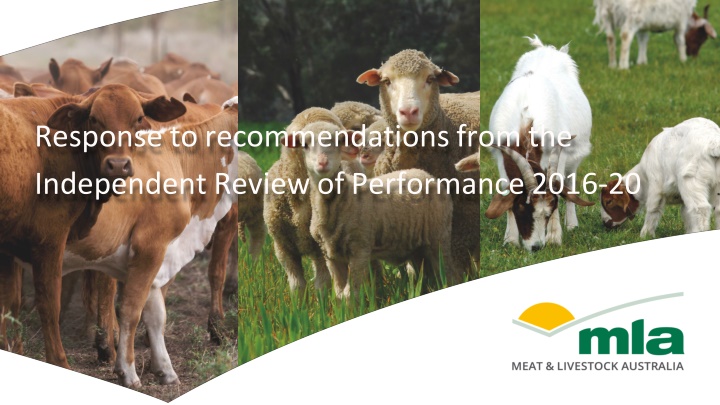
Independent Review Recommendations: Strengthening Stakeholder Engagement
Progress updates on implementing recommendations from the Independent Review of Performance 2016-20, focusing on setting clear direction for ISC and strengthening stakeholder engagement with detailed action plans and system enhancements in place.
Download Presentation

Please find below an Image/Link to download the presentation.
The content on the website is provided AS IS for your information and personal use only. It may not be sold, licensed, or shared on other websites without obtaining consent from the author. If you encounter any issues during the download, it is possible that the publisher has removed the file from their server.
You are allowed to download the files provided on this website for personal or commercial use, subject to the condition that they are used lawfully. All files are the property of their respective owners.
The content on the website is provided AS IS for your information and personal use only. It may not be sold, licensed, or shared on other websites without obtaining consent from the author.
E N D
Presentation Transcript
Response to recommendations from the Independent Review of Performance 2016-20
Recommendation 1: Set a clear and certain direction for ISC Provide a clear direction and secure funding for the next 3-5 years so that ISC can better support its commitments to Australia s red meat integrity system Actions Progress ISC has developed the Integrity Systems 2025 and Beyond Strategy (IS2025) in conjunction with industry which has a detailed implementation plan developed including the annual budget estimates until 2022. A full 5 year budget has been completed with MLA finance to align with the new MLA strategic plan. The IS2025 Strategy was reviewed and refined in FY21 to ensure ISC's investments in the integrity system are based on insights and are targeted across areas that will deliver the greatest impact to ISC s customers and the broader industry. ISC s funding basis has been well established and on-going annual budget reviews are conducted as a part of the annual MLA budgeting and consultation cycle.
Recommendation 2: Continue to strengthen stakeholder engagement MLA should actively pursue the successful implementation of a Key Account Management strategy and framework (Project Auto) and associated systems-information reforms (Project CODEX). These initiatives should form the narrative for how MLA will work with stakeholders to improve engagement and service delivery with associated reporting Actions The introduction of a key account management framework (Project Auto) is underway and will be greatly enabled by the CRM. Progress Stakeholder engagement framework developed from 2020 audit and circulated internally Audit follow up in June 2022 conducted, with no new recommendations. Updates to the framework as internal structural changes occurred Key account management system in use since 2021. Undergoes review and refresh to remain current IMK stakeholder audit to inform any further changes to KAM and Stakeholder engagement framework Current stakeholder engagement and consultation framework that has recently been updated from internal auditing recommendations. The CRM is also the key enabler for a new platform to streamline project administration, reporting and information management across MLA (Project Codex). Used effectively across MLA, the CRM will also help to ensure services and communications are better targeted to stakeholder needs. Key account management system is now a core business activity. All key accounts have been identified and have a senior MLA manager allocated. All KAM engagements recorded in the CRM and monthly MLA update. Key actions with respect to a strategic key account management include: Implementation of a Key Account Management program at MLA for large levy payers (producers & processors) Regular schedule of engagement with PICs and SFOs to exchange information on MLA activities and industry issues MLA PIC consultation system has been set up and recently reviewed. Quarterly PIC group consultation meetings now occur providing a review of the AIP budget and deliverables. Face to face individual quarterly meetings are now held to complement the group meetings. Individual PIC meetings cover sector specific budget expenditure and any relevant issues. Weekly email briefs are provided to the PICs, SFOs and DAFF.
Recommendation 2: Continue to strengthen stakeholder engagement (continued) Actions Key actions with respect to the CRM include: Enhanced management of the MLA centralised CRM database, where stakeholder engagements are recorded. Improve MLA project management and reporting functionality via the CRM platform Enhance communication and engagement with stakeholders via tailored and targeted relevant messages to stakeholders. Progress Initial CRM training rolled out in F2F sessions across the business Refresher/Induction training conducted monthly with 1:1 sessions also provided as required Events and Marketing Hub, Project Hub (was Research Hub) and MSA Hub are all fully operational platforms and heavily used across the entire business Ongoing process reviews and system enhancements are continually being implemented to ensure the platforms deliver improved efficiencies across the business
Recommendation 3: Relevant and linked Key Performance Indicators MLA should maintain the practice of linking KPIs to the MISP. Stretch stakeholder satisfaction KPIs should be progressively expanded to include members and other key stakeholder segments in line with the Key Account Management strategy and framework Actions Ensure MLA 2025 Strategic Plan Outcome Statements and Success Indicators have clear alignment to Industry Strategic Plan (Red Meat 2030) via mapping of Industry Priorities to MLA Program and Sub Programs (major contributors) Progress Completed in FY20. Mapping MLA 2025 Strategic Plan to Red Meat 2030 (RM2030) priorities and indicators completed and documented on page 50. Note that the RM2030 Success Factors were updated end 2022, and hence mapping will need further updating in next revision of MLA s Strategic Plan. Ensure MLA Annual Investment Plans and supporting program business plans have clear links to MLA 2025 Strategic Plan Outcomes and Success Indicators and Red Meat 2030 Industry Priorities through mapping of MLA Programs and Sub Programs (major contributors) Completed in FY20. All Annual Investment Plans and Program Business Plans are clearly linked to the MLA 2025 Strategic Plan. Completed in FY21. Progress against agreed AIP KPIs (via subprogram reports) and Strategic Plan KPIs is reported each quarter. Progress on Strategic Plan Success Indicators and AIP KPIs reported in each Annual Report (typically published in Sept each year). In FY23, MLA also commenced reporting against RM2030 Success Factors (annual update). Annual review and reporting of progress to Outcome Statements and Success Indicators (against MLA Strategic Plan 2025) and annual review and reporting of delivery against Annual Investment Plan KPIs
Recommendation 3: Relevant and linked Key Performance Indicators (continued) Actions Include member satisfaction scores and 2025 target in MLA 2025 Strategic Plan Success Indicators. Include annual targets in MLA Annual Investment Plan and report progress. Review survey design on annual basis to ensure it reflects broader stakeholder engagement objectives Progress Included in Strategic Plan 2025 with a benchmark of 6.6/10. Current score is 7.7/10 Membership KPIs included in AIP for the last 5 years. Current KPI is to increase MLA membership by 200 members from 2022 23 baseline.
Recommendation 4: Committee Effectiveness MLA should extend the application of a two-way engagement model to include a rolling schedule of facilitated self- assessment of all committees it convenes or funds. Findings would be reported to member organisations. Service level agreements between each committee and MLA should be established for a defined period after each assessment. MLA should publish the terms of reference, service level agreement and self-assessment findings for each committee. Such an extension will propel MLA s engagement function to the next level of maturity Actions Conduct stocktake of MLA committees and supporting TOR. Undertake stakeholder and desk top review of possible approaches to engagement effectiveness, including self- assessment and reporting. Progress Stocktake completed in Q2, FY21. Total number of taskforces refined. New TORs developed for the new taskforces. Formulate proposed framework for engagement effectiveness. Formulate draft implementation plan. Undertake stakeholder consultation. Annual SLA s have been set up with the production PICs to ensure a coordinated and consistent approach is applied to MLA/PIC engagement. Quarterly reviews are conducted against SLA deliverables. TOR reviewed on an annual basis to ensure they remain fit for purpose and aligned to other industry requirements and appropriately manages conflicts of interest. Discussion undertaken with each committee. Phased implementation of engagement effectiveness framework. The functions of the Integrity Systems Taskforce were integrated into the Supply Chain Taskforce when it was established in August 2021. The Supply Chain Taskforce has been operating effectively over the past two years, and a review of the Terms of Reference is planned for December 2023 in consultation with the Taskforce. Integrity Systems Taskforce TOR undergoing review for effectiveness and purpose.
Recommendation 5: Evaluation and investment MLA should supplement its current evaluation model with more evaluation of issues that are difficult to analyse and do not fit well with a standard economic evaluation framework. These issues could relate to the prosecution of CN30 initiatives or ISC s 2025 real time traceability , automaticintegrity and insights and information activities. MLA should consider piloting a range of quantifiable evaluation techniques which help to inform investments that address these issues Actions Progress Completed in FY23. Triple bottom line (TBL) framework developed and implemented. Develop and implement triple bottom line reporting in MLA investments including the quantification of benefits (where practicable). Completed in FY22, under Path2Impact approach to investment. Includes annual review of investment portfolios, linked to upgraded systems and processes focussed on delivering impact. Quantitative and qualitative analysis developed that assists MLA in developing a balanced portfolio that maximises returns to MLA stakeholders Completed in FY22. ISC evaluation now embedded and part of overall TBL framework. Extensive BCR modelling carried out on IS2025 strategy in FY21 but superseded by more detailed BCR modelling in FY23. ISC are completing an updated Monitoring & Evaluation framework, with quantifiable techniques and comprehensive ex-ante BCR analysis for the IS2025 strategy.


